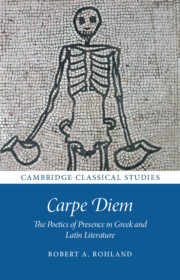Texts and, where applicable, numeration of fragments are quoted according to the following editions unless otherwise noted. Alcaeus: Voigt (1971). Anacreon: Page’s PMG. Anacreontea: West (1993). Horace: Klingner (1959). Juvenal: Clausen (1992). Martial: Shackleton Bailey (1990). Petronius: Müller (1995). Pliny the Elder: Rackham, Jones, and Eichholz (1938–63). Vergil: Mynors (1969). Comic fragments: Kassel and Austin (1983–2001). Elegy and iambus: West (1989–92). Wherever epigrams are included in Gow and Page’s HE, GP, and FGE, their text is printed, and their numeration is given in addition to the source of the epigram (in most cases the Greek Anthology). The exception to this rule are the epigrams of Posidippus and Philodemus; here, Austin and Bastianini (2002) and Sider (1997) supersede HE and GP, respectively. Editions of less frequently quoted authors are noted in-text.
Textual apparatus are quoted selectively with the purpose of illuminating issues under discussion rather than giving a complete picture of textual problems of quoted passages. The apparatus and sigla are taken from the editions used. It should be noted, however, that for apparatus of Horace the sigla are taken from Shackleton Bailey (2001) rather than Klingner (1959) in the light of the findings of Brink (1971a) 1–43 concerning the transmission of Horace’s text (cf. Tarrant (1983) and (2015b), and Shackleton Bailey (2001) i–viii). References to the Theognidea do not take a stance on the authenticity of individual fragments. They are thus generally cited as ‘Thgn.’ rather than ‘[Thgn.]’. All texts in languages other than English which appear in the body of the text are translated. Translations are my own.



